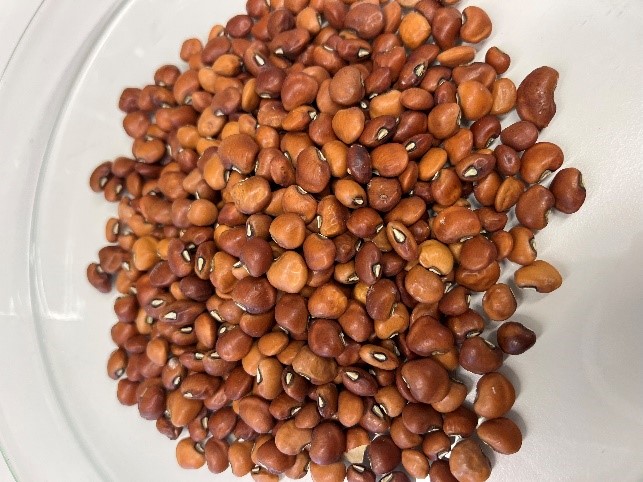This blog post is written by Sunera Zulficar Nurmomade, PhD student at the Department of Molecular Sciences at SLU in Uppsala.

Mothers are informed about the interview process. Photo: Sunera Zulficar Nurmomade
When I think about undernourished children in Mozambique, I wonder how I can contribute as a researcher to reduce these alarming malnutrition rates in my home country.
In 2020, I was in Cabo Delgado (the northern part of Mozambique), doing fieldwork. I had the opportunity to talk to and ask some questions to mothers and community leaders to understand the problems connected to undernourished children in these areas. These questions and observations were important to understand food habits, cultural choices and traditions, which helped me to develop different ideas for the project. The idea to choose pearl millet and cowpea in my research is because these grains are locally produced, available, affordable, nutritious and drought resistant. During my fieldwork it was possible to interact with the people in these communities to understand the problems and explain how these grains can be a potential choice to incorporate into their diets, especially into children’s diets, to prevent malnutrition and food insecurity. Furthermore, how to apply traditional processing methods to these grains, such as soaking, germination and fermentation, and why it is very important to apply these treatments to enhance the nutrients and make them bio-available and bio-digestible.

Mothers are informed about the interview process. Photo: Sunera Zulficar Nurmomade


Pearl millet (left) Cowpea (right) Photo: Sunera Zulficar Nurmomade
Soaking, germination and fermentation have been used as traditional processing methods for decades in some parts of African communities since it is affordable and effective in improving nutritional quality and reducing the anti-nutritional factors of the grains. In addition, these traditional processing methods benefit grain digestibility and give favourable characteristics to the final product.
Germinated grains have a high activity of hydrolytic enzymes, which is important for breaking down the major compounds such as starch and non-starch polysaccharides, to reduce the viscosity of thick porridges without dilution with water. Using flour from germinated grains increases energy density and improves the content of some nutrients. On the other hand, fermented grains are important because microorganisms and enzymes produced by the natural microflora alter the composition of the substrates in various ways, improving texture, taste digestibility and nutritional value.
Pearl millet and cowpea are as nutritious as other grains; the key is to know how to prepare them to enhance the nutrients and reduce the anti-nutrients present in the grains. Pearl millet is a good source of macronutrients such as fat, protein, carbohydrate, and micronutrients such as vitamins and minerals. It is also a gluten-free product. Cowpea is a plant protein source used to enrich infant cereal food. Its high lysine content makes it an excellent enhancer of protein quality to add as a complementary ingredient. Moreover, it is beneficial for people that do not have access to animal protein.
Why is this important to know and why is it interesting to study the effect of traditional processing methods on the grains?
Mozambique is a low-income country in the southern part of Africa; 43% of children under the age of five suffer from chronic malnutrition. Food quantity is not always the principal problem, improper feeding practices, i.e. a poor combination of food products, and insufficient knowledge on enhancing nutritional quality through traditional processing methods are the primary problem. This project provides knowledge on changes caused by traditional processing methods on the physicochemical and microstructure properties of pearl millet and cowpea grains and gives potential knowledge about the raw material and possibilities to develop new novel food products.
My study showed that the traditional processing methods, such as germination and fermentation, positively affects the grains, changing the physicochemical properties and microstructure characteristics. Germinated pearl millet showed high enzyme activity, which reduced the amount of total starch content and amylose content, something that is important to increase the energy density of the porridge and soluble dietary fibre. These soluble fraction of dietary fibre are essential because it attracts water and turns to gel in the gut, trapping carbohydrates and slowing the absorption of glucose. Fermentation also changed the physicochemical and microstructure properties of pearl millet and cowpea. However, total starch and amylose content was not affected by fermentation.
This research can have a global impact contributing to Agenda 2030 by improving nutrition and achieving food security. We all know that malnutrition is one of the biggest problems in the world, and this research can help other countries facing the same problem as Mozambique.
Read more? Visit the webpage about millets at SLU Global.
